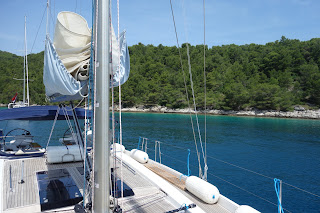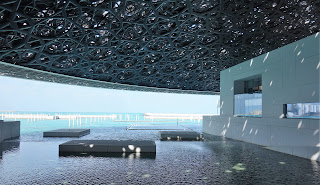Since Donald Trump announced his candidacy and through becoming the
45th president of the United States I have had one overriding
question. Is this a man “with a lot to
lose” or one “with nothing to lose?”
What follows is pure supposition, perhaps my intuition kicking in from being
around characters like President Trump over my many years in real estate, and
the automobile dealership business. Many of these folks were very much like
Trump: loud, aggressive, sure of themselves, vain, narcissistic, misogynistic
and tribal. And let us not forget egotistical!
To further explain I need to regress a bit, so bear with me. Financial wealth is defined as your net worth;
your assets (what you have) minus your liabilities (what you owe). In life, we
see only a person’s assets (what they have); liabilities are usually pretty
invisible. By way of example, two persons might each have a net worth of $10
million. “Person One” might have a $10 million home with no mortgage; “Person
Two” might have a $100 million home with a $90 million mortgage. “Person Two”
will look much, much wealthier to the outside world than “Person One.”
My hunch is that President Trump is more like “Person Two.” If I’m
right, it could explain lots of behavior – especially because President Trump’s
outsized ego makes the average captain of industry’s ego look puny. I’m
guessing that the Trump family is in the top
one-tenth of one percent;
but not close to inclusion in the top one-thousandth of one percent
(in the US, roughly 1,600 households).
Trump has spent his life trying to be a member of this club, and has
done a magnificent job of pretending he has succeeded. I’m sure his biggest
fear is being found out. He probably has taken many outsized, dangerous gambles
(with some failing disastrously) to secure a seat in this oh so exclusive cohort.
And with each failure, his liabilities have increased. If this is true, it
explains a lot:
·
Not releasing tax returns was not because he didn’t want people to see how rich he was;
rather the opposite. It would expose his lessened status so he fought this to
the bitter end.
·
His business interests are
non-public and tribal; with governance and accounting managed by seemingly
unqualified people and outside firms (think Madoff).
· A string of bankruptcies
ruining thousands of lives.
· Aggressively litigious behavior
with hyper reactions to threats on privacy or
reputation; heavy use of non-disclosure and confidentiality agreements.
·
Associations with Russian
and other opaque characters. He could not use
traditional banking or public credit markets – these institutions would not
lend to him. These shadowy types were willing to provide financing to Trump and
his enterprises in return for laundering funds, industry access and since
Trump’s political ascension, governmental contact and influence.
·
Naked use of government
associations to further Trump family interests.
This is truly a low point in peddling influence for personal enrichment in the
highest office.
·
Support of controversial
single-interest policies. These policy lobbies were
a source of campaign funding and political cover during the election and then bled into the administration’s cabinet picks and policies. If Bloomberg, Buffet,
Gates or one of the Koch brothers ran for the highest office, would they be
going hat in hand this way?
Over the years, some Trump-like people turned out to be very, very
wealthy – truly rich and truly lucky. Others seemed so for some period, but
ultimately their penury came to light. Robert Maxwell’s story in the 1990’s is a
good example.
Maxwell, a media magnate and British member of parliament, led a
flamboyant lifestyle, buzzing around in his helicopter and sailing in his
luxury yacht, the Lady Ghislaine. He was notably
litigious and often embroiled in controversy. In 1989, he had to sell
successful businesses, including Pergamon Press, to cover some debts; and in
1991 his body was discovered floating in the Atlantic Ocean,
he supposedly had fallen overboard from his yacht. After his mysterious death,
huge financial discrepancies were uncovered, including his fraudulent misappropriation
of hundreds of millions of Pounds from the Mirror Group’s Pension Fund. All of
Maxwell’s companies were later declared insolvent.
So, back to the answer to my query. I think President Trump, like
Maxwell, is a person “with nothing to
lose.” He has and still is betting it all to show the world he is a member
in good standing in the club he so covets. Combine this overriding passion with
his lack of moral compass and the rest of us “with a lot to lose” have much to worry about. I think this
passion, this fear of losing, drives this man more than anything else. This
makes him perhaps the most dangerous man on earth.
 |
| Our Emperor |
Our emperor may have no clothes, or more aptly, no cash.











































